An extended object of size 2 cm is placed at a distance of 10 cm in air (n = 1) from pole, on the principal axis of a spherical curved surface. The medium on the other side of refracting surface has refractive index n = 2. Find the position, of image formed after single refraction through the curved surface.

40 cm
80 cm
60 cm
10 cm
The correct Answer is:A
40 cm from pole in the medium of refractive index
Topper's Solved these Questions
Similar Questions
An extended object of size 2cm is placed at a distance of 10cm in air (n=1) form pole, on the other side of refracting surface has refractive index n=2. Find the positon, nature and size of image formed after single refraction through the curved surface.
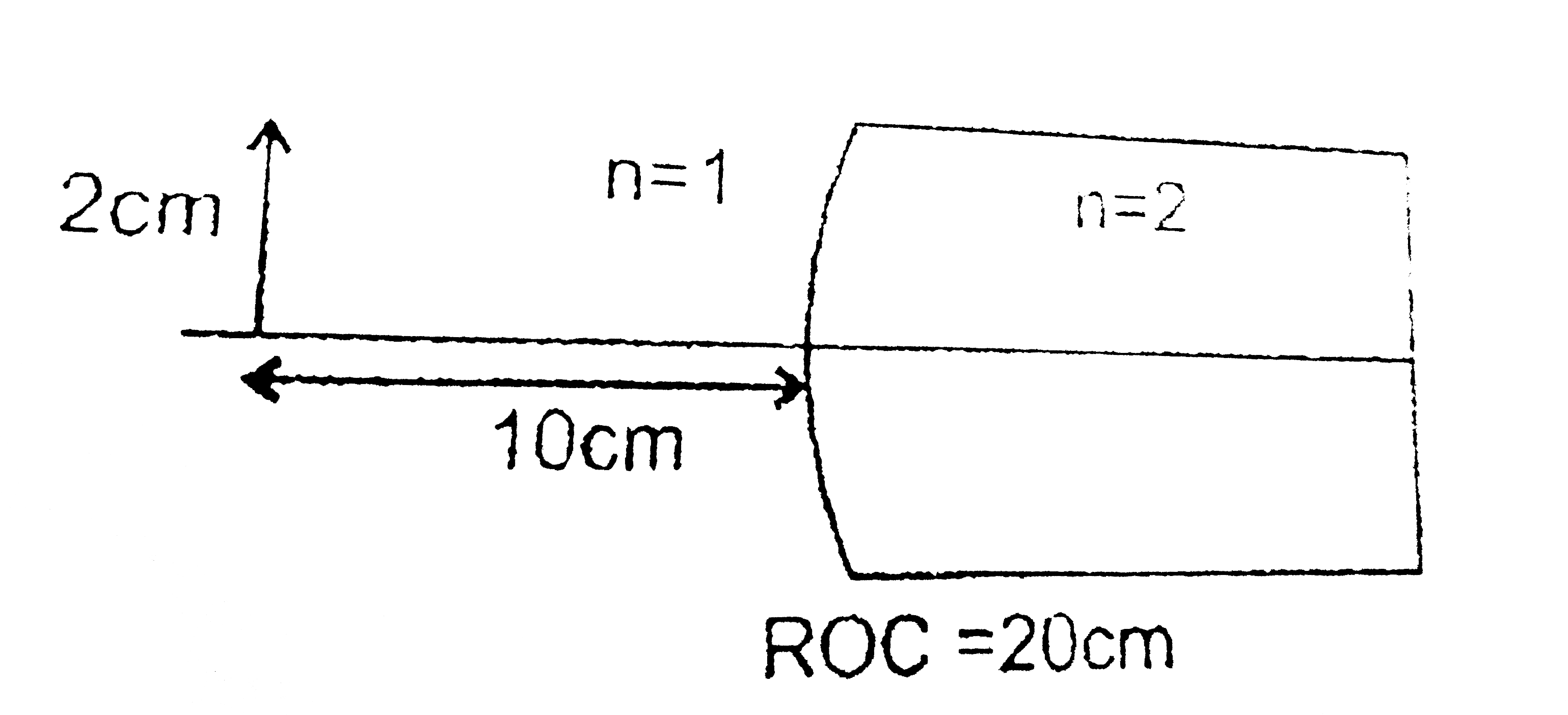
View SolutionAn extended object of size 2cm is placed at a distance of 10cm in air (n=1) form pole, on the other side of refracting surface has refractive index n=2. Find the positon, nature and size of image formed after single refraction through the curved surface.

View Solution
Knowledge Check
An extended object of size 2 cm is placed at a distance of 10 cm in air (n = 1) from pole, on the principal axis of a spherical curved surface. The medium on the other side of refracting surface has refractive index n = 2. Find the position, nature and size of image formed after single refraction through the curved surface.
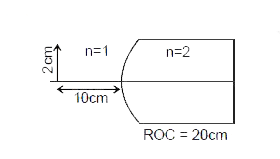 A30 cm from pole in the medium of refractive index 1, virtual, erect and 4 cm in size.B40 cm from pole in the medium of refractive index 1, virtual, erect and 4 cm in size.C40 cm from pole in the medium of refractive index 1, real, inverted and 4 cm in size.D30 cm from pole in the medium of refractive index 1, virtual, erect and 6 cm in size.
A30 cm from pole in the medium of refractive index 1, virtual, erect and 4 cm in size.B40 cm from pole in the medium of refractive index 1, virtual, erect and 4 cm in size.C40 cm from pole in the medium of refractive index 1, real, inverted and 4 cm in size.D30 cm from pole in the medium of refractive index 1, virtual, erect and 6 cm in size.The image for the converging beam after refraction through the curved surface is formed at
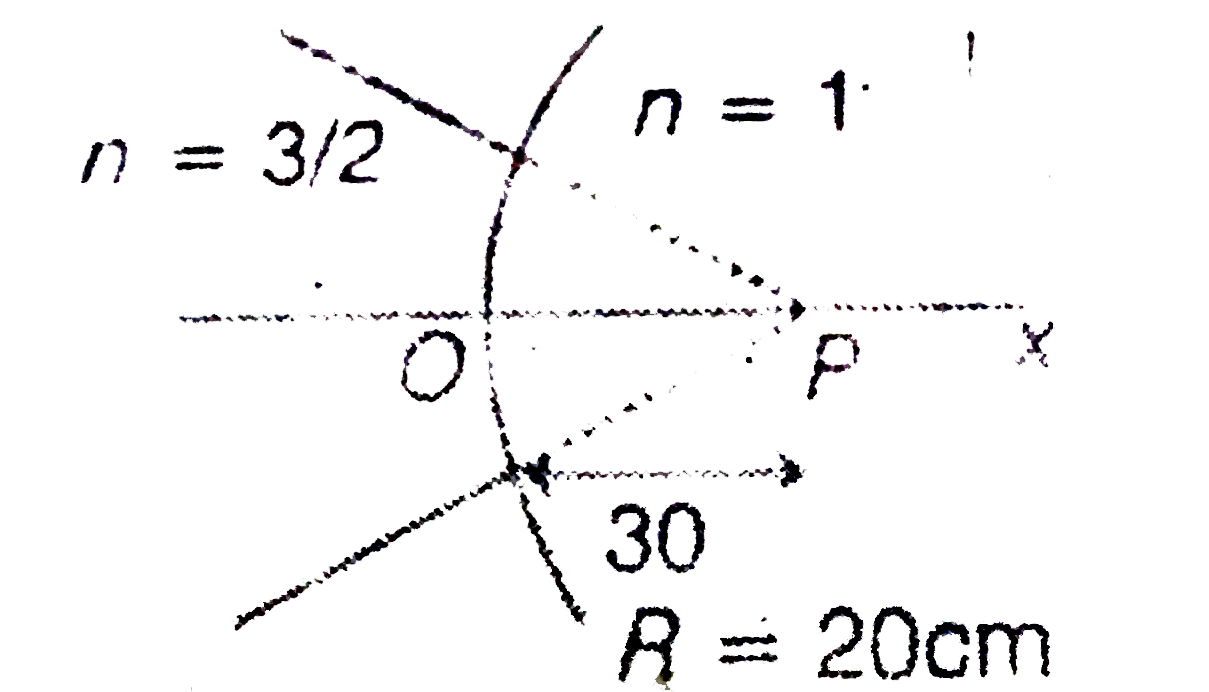 A40 cmB403 cmC20 cmD1807cm
A40 cmB403 cmC20 cmD1807cmAn object is placed at a distance of 10 cm (in a medium of μ = 1) from the pole of a spherical refracting surface bounding a medium of μ = 1.5. If the image formed is virtual and at a distance of 40 cm, then the spherical surface is –
Aconcave with radius of curvature = 8 cmBconvex with radius of curvature = 8 cmCconcave with radius of curvature = 3.6 cmDconvex with radius of curvature = 3.6 cm
The image for the converging beam after refraction through the curved surface is formed at

View SolutionThe image for the converging beam after refraction through the curved surface is formed at

View SolutionFigure below shows a parallel beam of monochromatic light incident on a convex spherical surface, radius of curvature R = 30 cm, which separates glass (refractive index - 1 6) from air. Find the position of the image formed due to refraction of light at this single spherical surface.
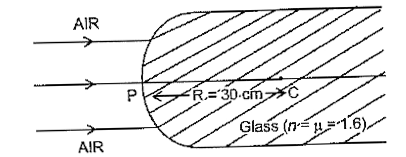
View SolutionIn the given figure, the radius of curvature of curved surface for both the plano-convex and plano-concave lens is 10 cm and refractive index for both is 1.5. The location of the final image after all the refractions through lenses is
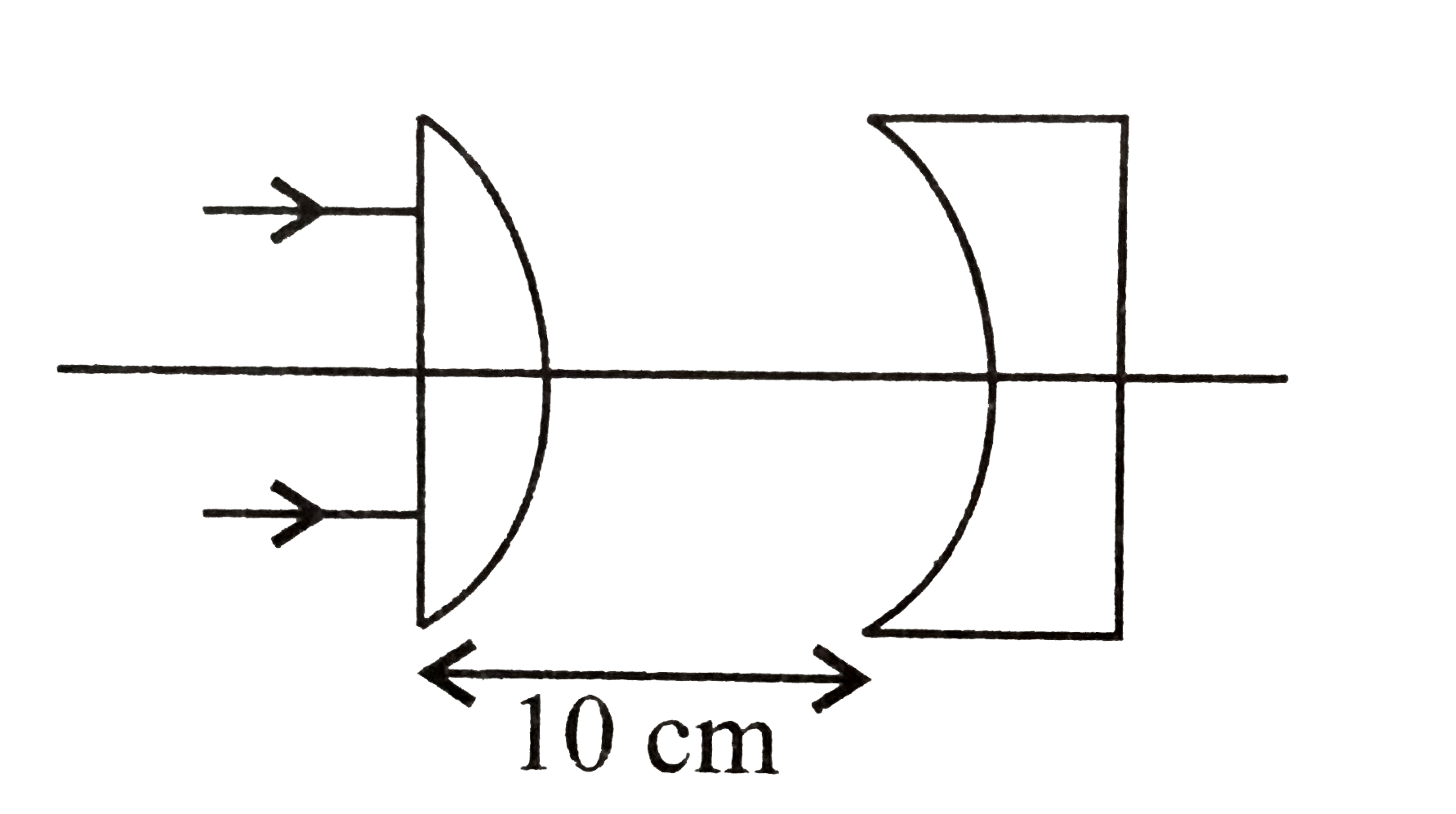
View SolutionIn the given figure, the radius of curvature of curved surface for both the plano-convex and plano-concave lens is 10 cm and refractive index for both is 1.5. The location of the final image after all the refractions through lenses is

View Solution
